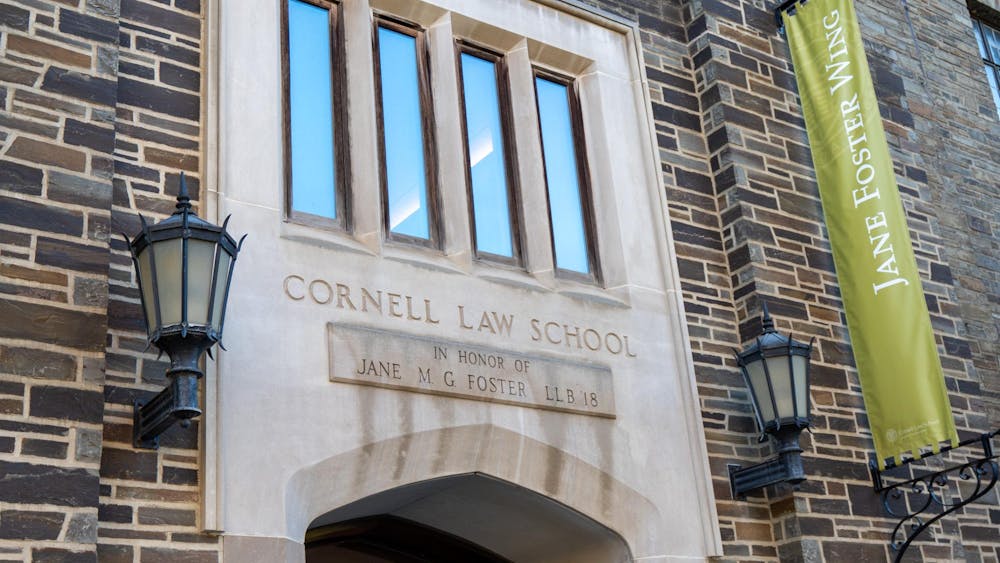Sabrina Gonzalez Haertig ’22 studies fine arts in the College of Architecture, Art and Planning (AAP). Recently, some of her artwork was displayed in an exhibit titled, “Es Lo Que Tenemos” at the Johnson Museum of Art. As the exhibit shows, Haertig believes in the power of using one’s efforts to address the social ills of the world today. “Es Lo Que Tenemos” was a powerful experience, intertwining social issues like immigration with a reckoning of her cultural identities as a Dominican and German woman.

Some of the exhibit criticizes the external determination of the government to remove illegal immigration — an example of this is the sculpture S.1200-99th Congress, referencing legislation enacted in the United States in 1986 imposing more restrictions on how many immigrants can enter the country. The sculpture consists of bags and suitcases in the shape of cages, identifying the paradox between the United States promoting the American Dream while criminalizing families that cross dangerous terrains and ultimately profiting from them via incarceration. “It was the beginning of really solidifying that migration is something to be criminalized, and how the incarceration system profits from the policing of bodies,” explains Haertig. “I wanted to show people the overlapping nature of incarceration and migration, that migration is not this one-off topic.”

Another notable work in the exhibit is Your Grandchild, Baptised in Trujillo’s Dream. Composed of a tiny photo of her family in the Dominican Republic during Haertig’s christening housed in a big golden frame, the artpiece encompasses the pursuit of European aspirationalism and the desire to belong to a culture that doesn’t honor your background. “Portraits are really expensive to paint since they are a luxury of those with wealth and power, as oil paintings, when they are commissioned,” Haertig remarks. “But you have this little photograph that’s taken from a cheap CVS printout camera, which is a tremendously more accessible medium, placed in the middle. The photo quite literally will never fill the frame, as those aspirations will never be achieved.”

Lastly, one more highlight from “Es Lo Que Tenemos” is Aba Fil, a box filled with sand as cast sugar hands reach out of it, trying to make their way out. The sand represents the sugarcane industry in the Dominican Republic, and how much of an impact it still has on many communities. As one discerns from the inscription in front of the piece, the title stems from a “Hatian-Creole term meaning ‘under the wire.’ The clandestine passage from the Haitian-Dominican border where Haitans are rounded up by Bascones to Bateyes.” These allusions simultaneously demonstrate the historic and contemporary exploitation of those on the island, formerly known as Hispaniola, along with the Haitians’ pursuit of a better life, showcasing their constant struggle. “It’s sad to see, when researching the work, that the hatred and subjugation of Haitians through migrant labor for sugar production stems from that same hatred and subjugation that the Spanish inflicted on both sides from the beginning,” exclaims Haertig. “Can you see that you have become who has once subjugated you?” she speaks towards her Dominican community.
One of my favorite questions that I asked Sabrina about her work is the present responsibility that she faces with storytelling and visualizing the history of her ancestry through her art, as well as how she manages her mental health while facing these challenges. “It doesn’t tax me in the way I thought it would. The one thing is that there’s a responsibility and heaviness to the extent to which I’m educating myself, and making myself more personally aware. Although to most it may seem heavy, when done for the community, I feel encouraged! I have this opportunity to allocate my time for something that goes beyond me.”
Although that present responsibility might be burdensome, Haertig is not afraid to take up the challenge to convey some of the most important messages in her work. It makes me think about the idea of legacy: How do we want to be remembered when we live on this Earth? How can we impact others who are underrepresented or underprivileged? Sabrina doesn’t have the answers for all of these questions, but as a fellow student at Cornell and as a fellow student of life, she’s more than willing to put in the hard work: listening and understanding.
Adesuwa Carlton is a freshman in the College of Arts and Sciences. She can be reached at amc555@cornell.edu.











